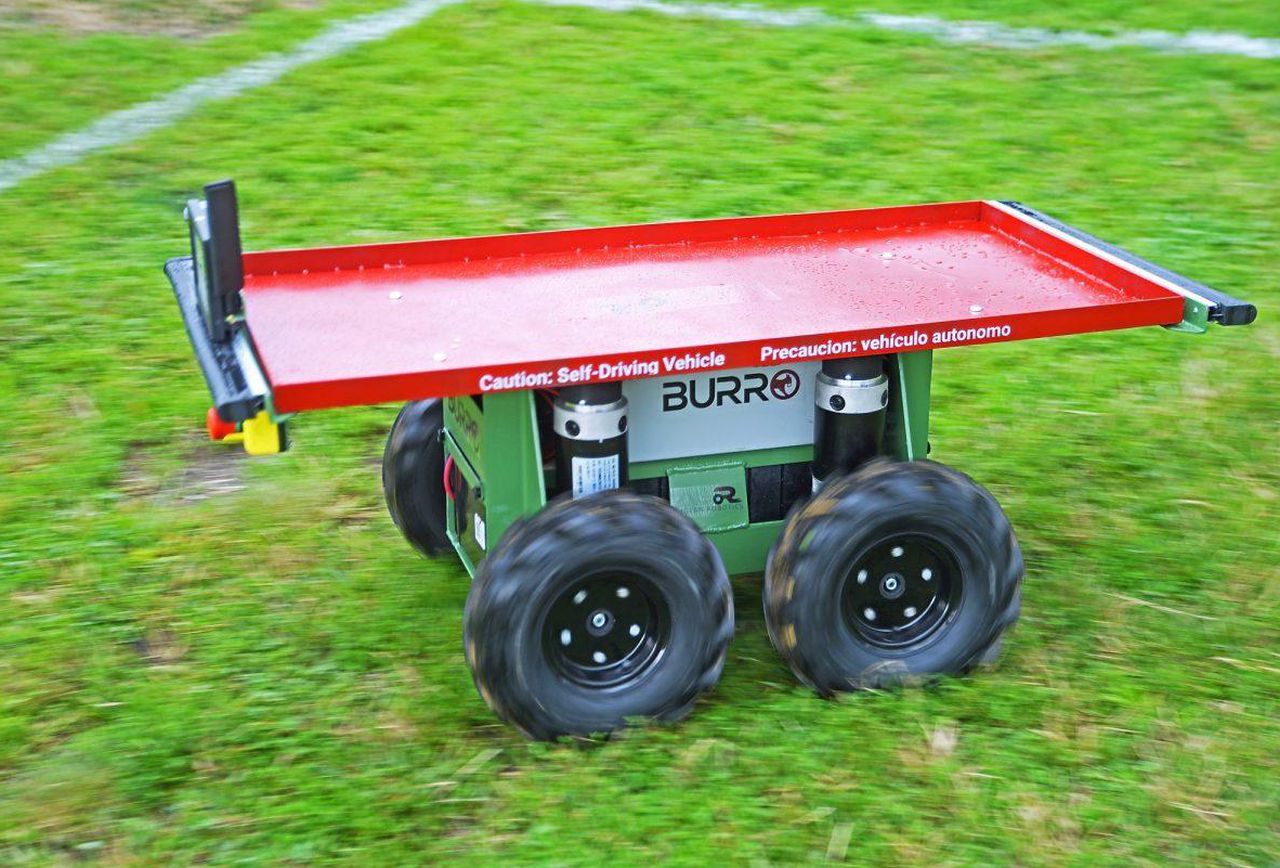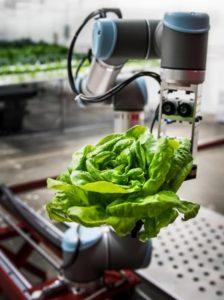Robotics wants to solve the California farm labor shortage
By Victor Martino
There’s a dark cloud hanging over California’s $54 billion agricultural industry — labor scarcity.
According to a recent California Farm Bureau Federation survey of 762 California farmers, 55% of those polled said they are experiencing labor shortages. The percentage was even higher – 70% – for those farmers who rely on seasonal farm laborers.
One solution many of these farmers said they’ve turned to in a effort to lure more farm workers is to raise wages.
But doing so hasn’t solved the labor shortage problem for them.
Instead, many of those surveyed said they see automation as the most likely alternative to the shortage of labor in the farm.
Enter precision agriculture — AgTech for short — which is growing by leaps and bounds, fueled by a scarcity of farm laborers, combined with new technological innovations in the fields of robotics, artificial intelligence, machine learning and other fields. The end goal is to create the next stage in agricultural mechanization — the “smart” farm.
A rapidly emerging area in precision agriculture is robotics.
Two cutting-edge startup companies specializing in robotics, Philadelphia-based Augean Robotics and Iron Ox, based in San Carlos CA, are generating a lot of attention in agricultural circles this fall.
The two startups have very different visions and missions when it comes to the application of robotics to farming. Both however share the view that robots in their various permutations are the solution to the growing farm labor shortage, which farmers in California have extreme concern about.
Meet the Burro

Augean Robotics has developed the Burro, a robot version of a small donkey that can haul up to 500 pounds for a farm worker.
Think of it as a productivity multiplier for a human worker. It improves a farm worker’s productivity by 20% to 30%, according to ongoing research, on the farms where it’s being tested.
According to Charles Anderson, CEO of Augean Robotics, the Burro is a particularly valuable labor-saving device for hand-harvested crops like table grapes, blueberries, raspberries and blackberries because each picker walks several miles each day carrying heavy containers of what they’ve picked.
Anderson says with a single Burro running up and down rows autonomously, a crew of people picking crops tend to pick 20-30% more produce per-day because the walking back and forth is eliminated.
The Burro, a self-driving vehicle that’s packed with cameras, has GPS and is connected to the cloud, is powered by artificial intelligence. It can track workers, knowing when they’ve filled a bucket or wheelbarrow, come by, pick it up and take it to a central location, all without human assistance.
The Burro robot learns as it works and in addition to carrying cargo has the capability to do a wide-range of tasks including spot spraying, pruning and even picking.
Augean Robotics and it’s Burro won first place in the Western Growers Association AgSharks Completion for precision agriculture startups in October. The startup received a $250,000 seed investment from Chicago-based venture capital firm S2G Ventures at the competition in Salinas.
Augean Robotics is interested in hearing from farmers who want to test the Burro on the farm.
With an estimated 20-30% addition to farm worker productivity it’s a very promising labor-saving first-step from the Philadelphia-based startup.
Iron Ox: The first fully-robotic farm in the USA

While Augean Robotic’s focus with its Burro robot is to be the farm worker’s assistant, San Carlos CA-based precision agriculture startup Iron Ox has a grander vision — it wants to eliminate farm workers entirely and replace them with fully-robotic farms.
The startup’s first robotic farm, which is indoors, is located in San Carlos between San Jose and San Francisco, part of that 60-mile land-mass known collectively as Silicon Valley.
The centerpiece of the indoor farm is Angus, a giant fully-articulated robot that can lift 800-pound containers filled with soil, water and seedlings.
Angus and its partner-robot are the farmers in the indoor farm where Iron Ox is growing a variety of vegetables hydroponically.
Currently the startup is focusing on growing leafy greens, kale, and herbs like basil. But founders Brandon Alexander and Jon Binney say that’s just for starters.
The AgTech entrepreneurs are well aware of the labor scarcity on California farms because before they started Iron Ox they talked to numerous farmers in the Golden State who told them their primary pain-point today is a shortage of farm labor.
This is particularly true when it comes to fresh produce crops like tree fruits, leafy greens and berries, which unlike cotton and grains require humans to harvest them.
Starting with the lettuce varieties, kale and herbs, which it’s already growing, Iron Ox plans to move into numerous other crops, growing them indoors and selling them directly to wholesalers and retailers, including retail giant Costco. The startup has decided to grow and sell its produce first before building similar robots for others.
The significant aspect of what Iron Ox is attempting is that it’s as close to fully-automated farming as you can get at this point in time. Most robotic innovations to date are mechanized tools used in pruning, weeding and harvesting that assist rather than replace human workers. This is an important step in testing the premise that robotics eventually can do it on its own, with some human assistance.
There’s nothing new about growing vegetables hydroponically in large greenhouses. But founders Alexander and Binney say their system saves 90 percent on water-use and eliminates the need for pesticides and herbicides.
The partners believe their robotic system, which took $6 million to build, will eventually be able to produce 30 to 40 times what a conventional greenhouse of the same size can.
The founders are cognizant of the fact that the true test of their robotic farm comes down to how many different crops they can grow. Crop diversity.
To that end they are now in the process of adding a second round of crops to the current mix: purple bok choy, broccolini and fenugreek greens.
The robots are currently being trained by engineers to grow each of these new crops.
Because the robots are powered by artificial intelligence they can use machine learning to become experts at the crops they’re tought to grow.
Precision agriculture to the rescue
There are basically only two solutions to the scarcity of farm labor in California: find more workers or find a way to augment human labor so fewer workers are needed to do the work.
A combination of generational change – fewer people want to do farm work today than ever before – and immigration policy make it unlikely more farm workers will materialize. Instead, mechanization in the form of “smart” technologies likes robotics is increasingly looking to be solve the labor scarcity problem through technology.
Investors have poured about $1.1 billion into AgTech so far this year. That’s huge.
Robotics startups, which a year ago were receiving little of this funding, are now starting to generate serious investor interest and funding. Labor scarcity is the key motivating factor behind this, much more so than simple labor savings.
The University of California along with other research universities globally are also growing their research efforts in the area of robotics for agriculture.
There’s a real concern among farmers and others in California agriculture that the labor crisis, particularly as it pertains to growers of fresh produce crops, might soon hit a crisis point. There were signs of it earlier this year when numerous growers in California reported letting some crops go unharvested do to a shortage of labor to pick them.
California agriculture plays a huge role in feeding the world. The economies of numerous counties in the Golden State, particularly in the Central Valley, depend on agriculture as the primary economic base for their communities.
The private sector can do little these days to influence U.S. immigration policy. But what it can do is use investment and innovation by focusing on technologies like robotics as a way to ease the labor crisis for farmers.
The advances in agricultural robots made in only the last 5 years are stunning. The momentum is such right now that 5 years from now we could see this jump from stunning to phenomenal.
The farm labor crisis isn’t going to be solved soon, if ever. Robotics and other forms of precision farming technology offer the best possible ways to help farmers with the situation in the medium to longer term.
California needs to be all-in for Agtech.

By Victor Martino
